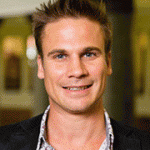Edited by Mark Faulkner, Amber Regis, Emma Rhatigan, and Graham Williams (School of English, University of Sheffield)
The questions and responses in this 360° emerged from a May 2013 symposium held at the University of Sheffield, ‘(Re)Presenting the Archive’. Over 50 delegates attended this one-day event (including academics, archivists, librarians, performance artists and postgraduate students); and almost everyone attended all of the presentations (there were no parallel sessions). The diversity of experiences, approaches and interests in the archive made for lively, at times heated discussion throughout the day, and the primary motivation for editing this issue comes from our desire as organisers of the symposium to capture and disseminate some of this discussion. All of the contributors to this 360 attended and presented at the symposium; and their comments reflect on issues, questions and (in some cases) critiques of explicitly re-presentational practices such as scholarly editing and curating in the Higher Education context and beyond.
The day began with an ‘Archives Masterclass’ for postgraduate students from Sheffield and beyond, led in part by contributor Sophie Baldock, a final-year PhD student in Sheffield’s School of English. Sophie’s specific experience with archives is focused on born-digital email correspondence (see her responses in this issue), but the masterclass was attended by postgraduates working on all sorts of archival materials from different periods – a broad spectrum of interest and experience which was reflected throughout the day and, we believe, also captured in the range of responses in this issue, ranging from medieval manuscripts (Edwards) to fairground materials (Scott and Trowell) and modern industrial music (Cheeseman).
In many ways, the lively and engaged atmosphere was established in the first talk, by keynote-speaker Professor Tony Edwards (Kent). In his talk – cheekily entitled ‘Filling the Archive’ (cf. void?) – Prof. Edwards called into question the rationale(s) for re-presenting, re-editing and/or re-publishing archival sources. As an experienced medievalist he discussed and critically interrogated the outcomes of past digitization projects; and more generally questioned approaches forwarded by archival projects that arguably compromise practical utility (for example, training to deal with actual manuscripts) in favor of current trends valuing ‘openness’ as an end in itself, particularly in digitization (see, for example, his response to question 2). The latter point also implicated institutional rationales in policy-making – for instance, is allocating funds to digitization for digitization’s sake better practice than funding archive-based PhDs? This elicited a strong response in the discussion that followed, especially from librarians and archivists.
Taking part in that productive opening response session were contributors Clare Scott (Arts and Humanities Subject Librarian, Sheffield) and Ian Trowell (National Fairground Archive, Sheffield). What emerged from points made then (and readdressed in Scott and Trowell’s response) was the need to reframe questions and concerns to do with archives from the perspective of those interested in academic questions to do with editing, etc., to those actually involved in bibliographic and archival management itself. Such ‘reframing’ is explicitly addressed in Scott and Trowell’s response here, and to a certain extent forms part of all the responses. Indeed, our desire to capture different approaches to the archive was something we encouraged from all our contributors, and we are happy to see reflected here in the final product.
Both crossing over and moving beyond the issues involved in other responses are those from Matt Cheeseman (Sheffield) and James Mussell (Leeds). Mussell took part in a panel on the day to do with ‘teaching, performing and transforming’ and his response here engages again with concerns to do with institutional policies towards archiving (see his response to question 4 in particular). But Mussell is also unique among the set of responses in that he directly addresses the notion of re-presentation as a form of refashioning, or ‘changing the past’ to serve uses (or ‘functions’, as in Edwards) in the present – something he argues can be ‘ok’.
In a similar vein, Cheeseman (originally part of a round-table discussion on the day) raises questions to do with re-presentation as ‘social cataloguing’ and ‘intervention’ in the context of popular culture. Again, this engages with the rationale of archival re-presentation, but in a way that more directly, and problematically has to deal with living memories and curatorial practice based around recent or contemporary material (e.g. the musical (re)performance and (re)recording of Sheffield-based industrial band Throbbing Gristle discussed in response to question 3). Particularly in the context of internet consumption (of, for example, books which arguably market themselves as ‘representing an archive’), there is a risk outlined by Cheeseman as ‘fetishisation of the archive’ (see question 1) – a point which again brings us back to Prof. Edwards’s keynote which asked what the function of archival re-presentation was . . .
We, as editors, have found it enlightening to revisit some of these discussions again in this format. Indeed, there are connections to be made and questions to be posed that were not part of the original symposium. Part of the benefit of bringing these pieces together is being able to present readers with an invitation to carry ideas and issues across the responses in ways unforeseen by the contributors.





